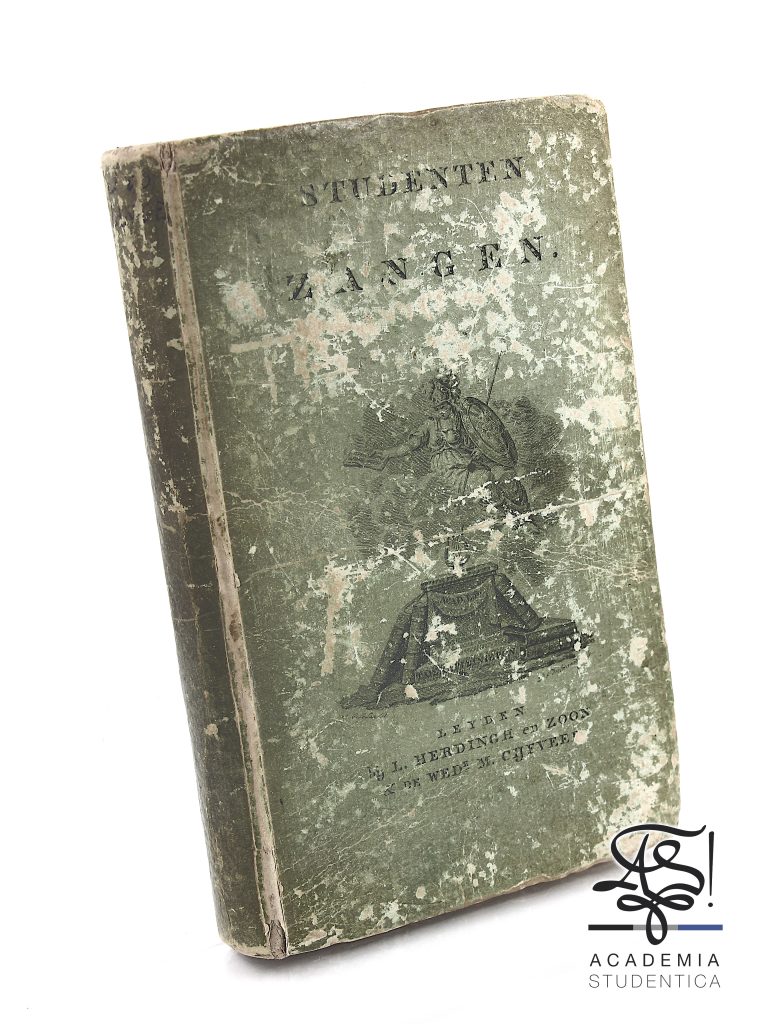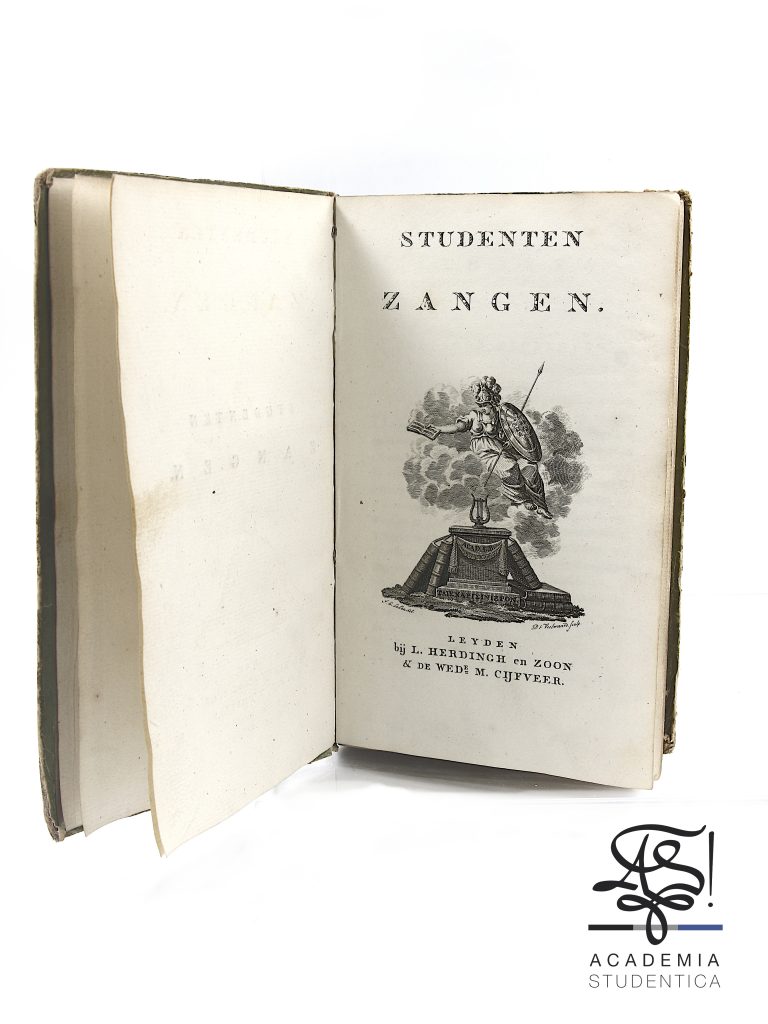Studenten Zangen, L. Herdingh en Zoon; The Netherlands, Leyden, 1822.
Collection: Cap’n
This collection of student songs was compiled by C. Steenhauer. It opens with a message from Minerva to the young students of the University of Leyden.
From the editors’ preface it seems that they were inspired by the German students. They felt the need for a collection of student songs in Dutch, but had to admit that the number of such songs in Dutch was not very large and that most of them were not appropriate for students. Therefore a number of students, who had already written texts for the “Leidse Studentenalmanakken”, were invited to write new songs. These new songs are supplemented in this edition by ‘the best songs from the student almanacs of 1815-1822’.
The book continues with two morality engravings of a good and a bad student by A.P. van Groningen in the style of Constantijn Huygens.
The volume contains, of course, the ‘Io vivat’ in Latin, but also a Greek, Hebrew and Arabic version. In addition, there are the Dutch national anthems of the time: the Wilhelmus, Wien Neerlands bloed, Voor Willem Neerlands dierbren Vorst and Wij leven vrij, wij leven blij. Seven other songs are known to have been written by the poet A. Boxman. In addition to most of the well-known Latin songs, the few classical student songs in High German have been included. There is no mention of French songs in this volume, because according to the editors they are well-known and overused, not to say over-hyped.
Studenten Zangen, L. Herdingh en Zoon ; Pays-Bas, Leyde, 1822.
Coll. : Cap’n
Cette collection de chansons estudiantines a été compilée par C. Steenhauer. Elle ouvre avec un message de Minerva aux jeunes étudiants de l’université de Leyde.
D’après la préface des rédacteurs, il semble qu’ils se soient inspirés des étudiants allemands. Ils ont ressenti le besoin d’un recueil de chansons pour étudiants en langue néerlandaise, mais ont dû admettre que le nombre de ces chansons en néerlandais n’était pas très grand et que la plupart d’entre elles ne sont pas appropriées pour les étudiants. C’est pourquoi un certain nombre d’étudiants, qui avaient déjà écrit des textes pour le “Leidse Studentenalmanakken”, ont été invités à écrire de nouvelles chansons. Ces nouveaux chants sont supplémentés dans cette édition par “les meilleurs chants des almanachs estudiantins de 1815-1822”.
Le livre se poursuit avec deux gravures de moralité représentant un bon et un mauvais étudiant, réalisées par A.P. van Groningen dans le style de Constantijn Huygens.
Le volume contient bien sûr le “Io vivat” en latin, mais aussi une version grecque, hébraïque et arabe. En outre, il y a les hymnes nationaux néerlandais de l’époque : le Wilhelmus, Wien Neerlands bloed, Voor Willem Neerlands dierbren Vorst et Wij leven vrij, wij leven blij. Sept autres chansons sont connues pour avoir été écrites par le poète A. Boxman. Outre la plupart des chansons latines connues, les quelques chansons classiques d’étudiants en haut allemand ont été incluses. Il n’est pas question de chansons françaises dans ce volume, car selon les éditeurs, elles sont connues et éculées, pour ne pas dire rebattues.
Studenten Zangen, L. Herdingh en Zoon; Nederland, Leiden, 1822.
Coll.: Cap’n
Deze bundel studentenliederen werd samengesteld door C. Steenhauer. En opent met een bericht van Minerva aan de jonge studenten van de Leidse hogeschool.
Uit het voorbericht van de opstellers blijkt dat zij de mosterd bij de Duitse studenten halen. Zij stelden namelijk de nood vast naar een Nederlandstalig studentenliedboek, maar moeten toegeven dat het aantal dergelijke liederen in de Nederlandse taal niet zeer groot was en de meeste niet geschikt waren voor studenten. Daarom werd aan een aantal studenten, die eerder teksten schreven voor de Leidse Studentenalmanakken, gevraagd om nieuwe liederen te schrijven. Die nieuwe liederen worden in deze uitgave aangevuld met “de beste Liederen der Studenten Almanakken van 1815-1822”.
Het boek gaat verder met twee zedeprinten van een goede en slechte student, door A.P. van Groningen in de trant van Constantijn Huygens.
Uiteraard bevat de bundel het ‘Io vivat’ in het Latijn, maar ook een Griekse, Hebreeuwse en Arabische versie. Verder zijn er de toenmalige Nederlandse volksliederen: het Wilhelmus, Wien Neerlands bloed, Voor Willem Neerlands dierbren Vorst en Wij leven vrij, wij leven blij. Van een zevental andere liederen is bekend dat ze zijn geschreven door de dichter A. Boxman. Daarnaast werden ook behalve de meeste bekende Latijnsche Studenten-Liederen, de weinige klassieke Hoogduitsche Studenten-Zangen opgenomen. Van Franstalige liederen is in deze bundel geen sprake, daar zij volgens de opstellers bekend en afgezongen, om niet te zeggen afgezaagd zijn.

